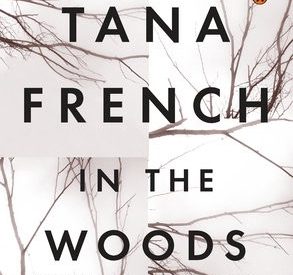 NOTE: Since this is an in-depth discussion of the book, expect spoilers. I know, duh, but I wouldn?t want anyone to complain they weren?t warned.
NOTE: Since this is an in-depth discussion of the book, expect spoilers. I know, duh, but I wouldn?t want anyone to complain they weren?t warned.
Through the years, Tana French has established herself as a key contemporary crime writer. When seeing such successful writers thrive, it is sometimes hard to remember that they had to start somewhere. It is also humbling on some level: even the most prominent authors now were nobodies at some point. Debut novels can be a simple jumping point to bigger, better things, or they can be so iconic in their own right that they remain fan favourites in spite of all the writer?s new novels. In The Woods, French?s own debut novel, is definitely one of those. It is where most of French?s fans started out, and where they immediately fell in love. And when confronted with a novel such as this one, falling in love isn?t that hard to do.
In The Woods is about two cases. The first one starts twenty years ago, in the fictional town of Knocknaree, County Dublin (there is however a real Knocknaree in County Waterford, if you?re interested with visiting places where fictional murders are set in. No judgement here!). Jamie, Peter, and Adam are best friends and living the best Summer of their young lives. That is, until one afternoon, they decide to go out in the woods nearby. They don?t come back for dinner, nor the following day. A few days later, Adam is found with blood on his shoes and four large scratches on his back, clinging to a tree, obviously terrified. Peter and Jamie won?t ever be found, and what happened to them remains a mystery.
Many years later, Adam has changed his name to Rob and is now a member of the Garda?s Murder Squad. He spent many of these twenty-two years trying to leave this part of his past behind, and for a long time, he thought he had successfully done so. That is until a young girl, Katy Devlin, is found dead near the woods of Knocknaree, and he and his partner Cassie are assigned to the case. Making a link between the two cases is inevitable, and soon enough, the past that Rob thought he had left behind catches up on him.
At the heart of In The Woods is of course a mystery, one we are expecting to find answers to. What sets the book apart from other police procedurals are its characters. The relationship between Cassie and Rob is a precious one, a friendship so strong that many of their co-workers can?t comprehend it. Rob perhaps puts their connection into words better than anyone else could:
?How can I ever make you understand Cassie and me? I would have to take you there, walk you down every path of our secret shared geography. The truism says it?s against all odds for a straight man and woman to be real friends, platonic friends; we rolled thirteen, threw down five aces and ran away giggling. She was the summertime cousin out of storybooks, the one you taught to swim at some midge-humming lake and pestered with tadpoles down her swimsuit, with whom you practiced first kisses on a heather hillside and laughed about it years later over a clandestine joint in your granny?s cluttered attic. She painted my fingernails gold and dared me to leave them that way for work?We climbed out her window and down the fire escape and lay on the roof of the extension below, drinking improvised cocktails and singing Tom Waits and watching the stars spin dizzily around us.?
It?s a dreamy connection, like something out of a fairytale: but in the context of the novel, it works. Cassie and Rob are constantly confronted with the worst of humanity: rape, murder, incest. It only seems fair that they?d get a bit of happiness somewhere else. Their dynamic is what makes the novel much less difficult to read than it should be. A child?s murder and rape is some pretty bleak material, but it?s never rendered unbearable (although that is also considerably helped by French?s consistently beautiful prose). As the investigation goes on, things become harder and harder for Rob, memories of his friend?s disappearance coming back to him more intensely than ever. And by the time they do reach an answer, it is clear that things won?t ever be the same again, for all involved.
What has been criticized is not the main case?s outcome. It is equally surprising and logical to satisfy most crime readers. What has been frustrating readers is rather the reveal that the events of this case are completely unrelated to the ones of Rob?s past, and consequently the fact that these events will remain unsolved for us.
Of course, there?s no denying that there would be an immense narrative appeal to seeing the two cases being knit together in a flawless way. It would satisfy all the completionists out there without a doubt, and certainly make for a compelling novel. That novel, however, would not be In The Woods. The book again and again finds its strength in its flaws. Rob falls victim to Rosalind?s charm. Cassie and Rob break off their precious friendship because of one night. Rob loses his job because of a rookie mistake. Getting a neat ending to everything would, yes, be satisfying ? but it wouldn?t fit in the novel.
Life sometimes makes no sense. It?d be nice if questions always had answers, if justice could always be served. That?s just not the way things are. Sometimes, people disappear and never come out of the woods again. Sometimes, dangerous criminals walk away freely. Friendships end, careers are stopped. It sucks, but there?s not much that can be done about it. It?d be comforting to have a neat ending because it would mean that Rob didn?t essentially ruin his life for no reason. But he did, as hard as it is to accept.
Rob always was ?in the woods?. All of his life has been shaped by these few days of his childhood he can?t remember. He changed his name because of it. He chose his job because of it. There?s something almost dirty about admitting trauma, about admitting that not everything about our mental lives can be clean and pretty. Rob?s mental state is a mystery. He knows the truth to what happened to his friends lies somewhere in his mind, and he is forever ready to avoid looking too deeply for it. Yes, it may be a slightly disappointing reality for crime fans looking for resolution, but it is what it is: reality. People cling to their sanity more than what fiction would like us to believe. Through the entire novel, French establishes that the closest Rob gets to remembering, the closest he is to lose everything he is. Over the last few hundred pages, Rob has lost his best friend and his dream job. The only thing he has left is himself ? it only makes sense that he would cling to it.
Because of the novel?s open ending, many theories have been explored by fans regarding what truly happened on that warm summer day in 1984. Two seem to be particularly prevalent. The first one is perhaps the bleakest: that Adam/Rob killed his own friends, most likely accidentally, and has repressed the memories to keep his sanity. The second plays on the supernatural undertones that are present in all of French?s works, and says that an Irish Pooka truly did get rid of the two children. There are contradictions and merits to both theories ? but the point is that it doesn?t really matter. The ending was left open for a reason. Of course it?d be more satisfying to know, but that?s just not how trauma works. By giving us a neat ending, French would have undone everything she would have established about Rob?s psyche over the last five hundred pages. For that reason, it is the best ending the book could have had ? coming from a deep understanding of trauma and coping mechanisms that few novels can pretend to share.


